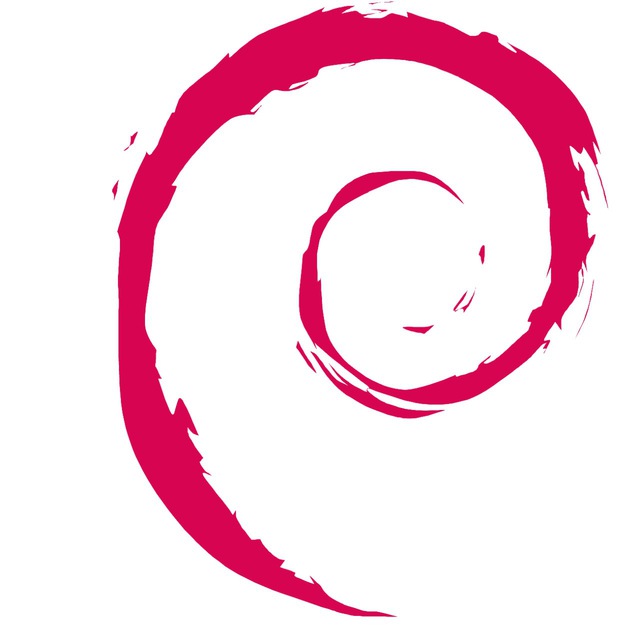s
Size: a a a
2020 March 06
O
практически, ну мамки немного различаются и штеуды разных ревизий. Все это спокойно конфигом ядра нивелируется. Рейдов там нема, ahci штатный, диск один.
дело конечно ваше, но на мой взгляд со временем все равно упретесь в версионность железа, линуксов (прекращение поддержки старых и т.д.), проще запихнуть спец софт в контейнер и разворачивай его где угодно и на чем угодно.
s
дело конечно ваше, но на мой взгляд со временем все равно упретесь в версионность железа, линуксов (прекращение поддержки старых и т.д.), проще запихнуть спец софт в контейнер и разворачивай его где угодно и на чем угодно.
Тут проще купить уже провереное железо, да и сборка ядра это минут 10-15 отсилы. Если бы не глюки в libalias и вкусности xt_NAT, то до сих пор эти машинки на FreeBSD крутились бы. К тому же если это новая машинка, то так и так 2-3 модуля собирать (ixgbe, xt_NAT, ipt_NETFLOW). А остальное у на фряхе живет пока.
K
А это называется циркулярное рисование, надо быть настоящим мастером, чтобы научиться такому, это потрясающе.
Прокачай Мозг🌎
Прокачай Мозг🌎
wG
Кто пробовал nix os, отпишитесь!
l
wolf Grey
Кто пробовал nix os, отпишитесь!
wG
? И что ты этим хотел сказать? Ты тратишь моё время на ответ тебе. Хотя ты и не пробовал устанавливать интересующую меня операционку. И как результат в место ответов на мои будущие вопросы, прислал хрень, на которую мне нужно потратить дорогое время....
wG
Если не юзал - пройди мимо и не мешай
МН
wolf Grey
? И что ты этим хотел сказать? Ты тратишь моё время на ответ тебе. Хотя ты и не пробовал устанавливать интересующую меня операционку. И как результат в место ответов на мои будущие вопросы, прислал хрень, на которую мне нужно потратить дорогое время....
Озвучь вопросы сразу
wG
Озвучь вопросы сразу
1- принцип работы репозитори ...так же как в дебьяне прописываешь соурс лист и с этого списка обновляешься?
2- каким таким макаром осуществили одновременное состояния пакета в разных версиях и почему система считается стабильной при этом?
3 - как обстоят дела с пропроитарными драйверами от жирафа? В прошлых был косяк с стабильностью.
4 - сколько весит / установленными пакетами от крыски?
2- каким таким макаром осуществили одновременное состояния пакета в разных версиях и почему система считается стабильной при этом?
3 - как обстоят дела с пропроитарными драйверами от жирафа? В прошлых был косяк с стабильностью.
4 - сколько весит / установленными пакетами от крыски?
МН
wolf Grey
1- принцип работы репозитори ...так же как в дебьяне прописываешь соурс лист и с этого списка обновляешься?
2- каким таким макаром осуществили одновременное состояния пакета в разных версиях и почему система считается стабильной при этом?
3 - как обстоят дела с пропроитарными драйверами от жирафа? В прошлых был косяк с стабильностью.
4 - сколько весит / установленными пакетами от крыски?
2- каким таким макаром осуществили одновременное состояния пакета в разных версиях и почему система считается стабильной при этом?
3 - как обстоят дела с пропроитарными драйверами от жирафа? В прошлых был косяк с стабильностью.
4 - сколько весит / установленными пакетами от крыски?
2 - каждый пакет кладется в отдельный префикс /nix/xxx/
HFS не соблюдается
На остальное не отвечу
HFS не соблюдается
На остальное не отвечу
l
wolf Grey
? И что ты этим хотел сказать? Ты тратишь моё время на ответ тебе. Хотя ты и не пробовал устанавливать интересующую меня операционку. И как результат в место ответов на мои будущие вопросы, прислал хрень, на которую мне нужно потратить дорогое время....
Вопроса не прозвучало, были только мета инсинуации
wG
2 - каждый пакет кладется в отдельный префикс /nix/xxx/
HFS не соблюдается
На остальное не отвечу
HFS не соблюдается
На остальное не отвечу
И система наплевать, что разные версии пакетов тянут разные либы?
МН
wolf Grey
И система наплевать, что разные версии пакетов тянут разные либы?
Там как-то в разные префиксы разные версии либ ставятся
wG
Там как-то в разные префиксы разные версии либ ставятся
Очень заманчиво...а если удаляешь пакет - то всё с вязаное с ним коректно удаляется и не оставляет мусора в системе?
МН
wolf Grey
Очень заманчиво...а если удаляешь пакет - то всё с вязаное с ним коректно удаляется и не оставляет мусора в системе?
Не знаю.
C
ext4 что плохо с ссд работает?))
Disadvantages of using Ext4
Ext4 is built on older technology, so it lacks modern file-system features found in systems like E2FS and BtrFS.
Ext4 has journaling on by default, and new users likely won’t know how to disable it to save read/writes on their SSDs.
BtrFS (B-Tree File System)
when talking about solid state drives, Btrfs is a pretty solid file system for basic usage. Initially designed at Oracle Corporation for use in Linux, Btrfs is a new kind of file-system that was created to mitigate problems, improve system performance, and make repair simple.
One reason that many people consider BtrFS for an SSD is that it doesn’t use a file system journal. Not having journaling allows it to save on write space (which is limited on SSDs). Also, it has a more modern architecture, which makes it quite fast when accessing data. In addition, BtrFS also has a robust snapshot feature, which allows users to create (and roll-back) changes to the system instantly.
As you might expect, BtrFS supports the usual SSD features like TRIM, and other SSD optimizations (like defragmentation, etc.).
Advantages of using BtrFS
BtrFS doesn’t have journaling on by default, so unlike Ext4, you won’t need to turn it off if you don’t want file system journals eating into your read/write rate.
The file system is new and under development so new features are added regularly.
BtrFS has an SSD defragmentation feature that allows users to clean up the data on their drive.
Disadvantages of using BtrFS
BtrFS is highly unstable and has the potential to crash and corrupt your data if something goes wrong.
BtrFS has a copy-on-write feature that is arguably just as bad as filesystem journaling, and could (potentially) exhaust your SSD read/write limit.
Ext4 is built on older technology, so it lacks modern file-system features found in systems like E2FS and BtrFS.
Ext4 has journaling on by default, and new users likely won’t know how to disable it to save read/writes on their SSDs.
BtrFS (B-Tree File System)
when talking about solid state drives, Btrfs is a pretty solid file system for basic usage. Initially designed at Oracle Corporation for use in Linux, Btrfs is a new kind of file-system that was created to mitigate problems, improve system performance, and make repair simple.
One reason that many people consider BtrFS for an SSD is that it doesn’t use a file system journal. Not having journaling allows it to save on write space (which is limited on SSDs). Also, it has a more modern architecture, which makes it quite fast when accessing data. In addition, BtrFS also has a robust snapshot feature, which allows users to create (and roll-back) changes to the system instantly.
As you might expect, BtrFS supports the usual SSD features like TRIM, and other SSD optimizations (like defragmentation, etc.).
Advantages of using BtrFS
BtrFS doesn’t have journaling on by default, so unlike Ext4, you won’t need to turn it off if you don’t want file system journals eating into your read/write rate.
The file system is new and under development so new features are added regularly.
BtrFS has an SSD defragmentation feature that allows users to clean up the data on their drive.
Disadvantages of using BtrFS
BtrFS is highly unstable and has the potential to crash and corrupt your data if something goes wrong.
BtrFS has a copy-on-write feature that is arguably just as bad as filesystem journaling, and could (potentially) exhaust your SSD read/write limit.
C
мне не нужен журнал на ноутбуке да еще и на ссд, у меня не сервер. А вот таймшифт нативно очень даже.



